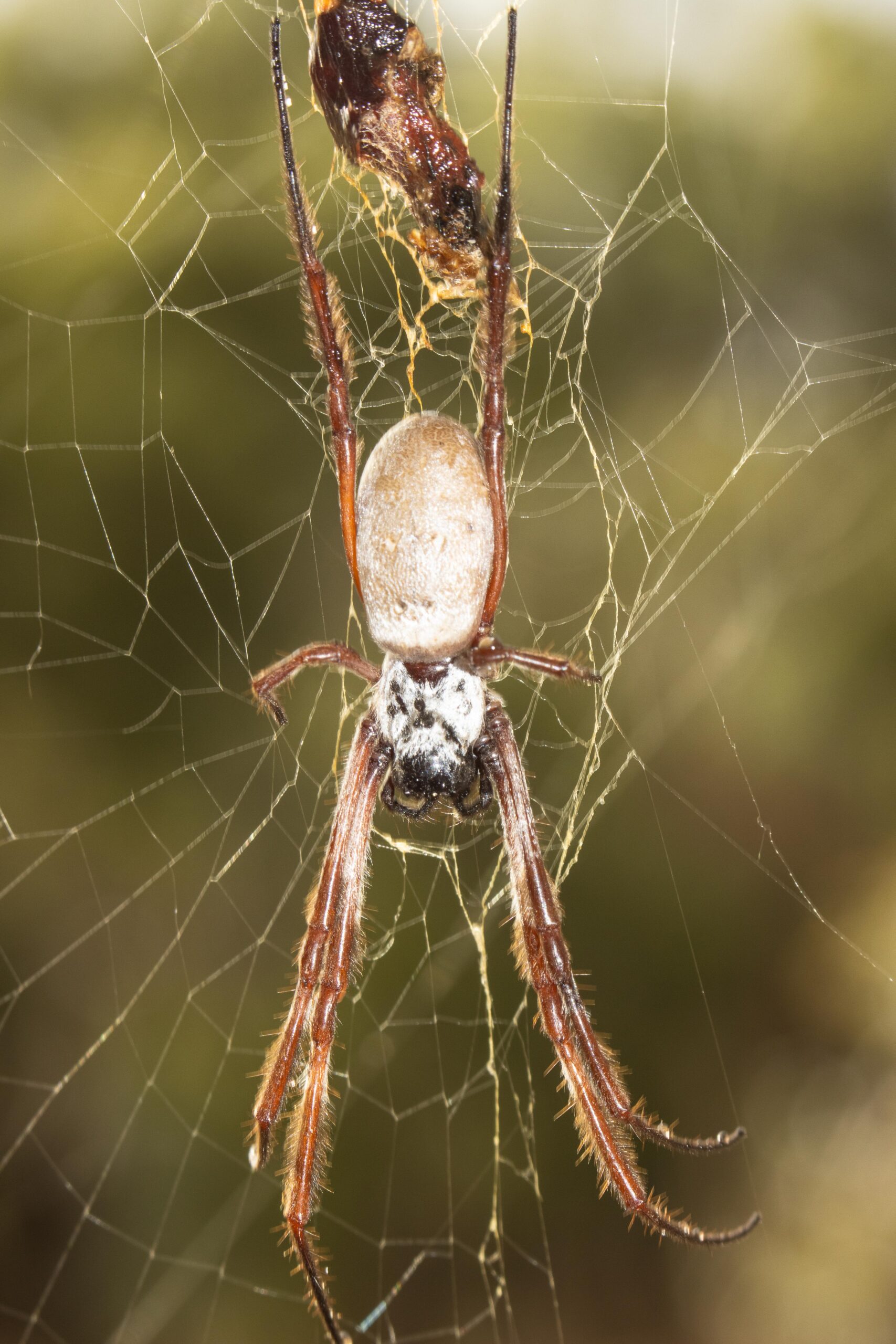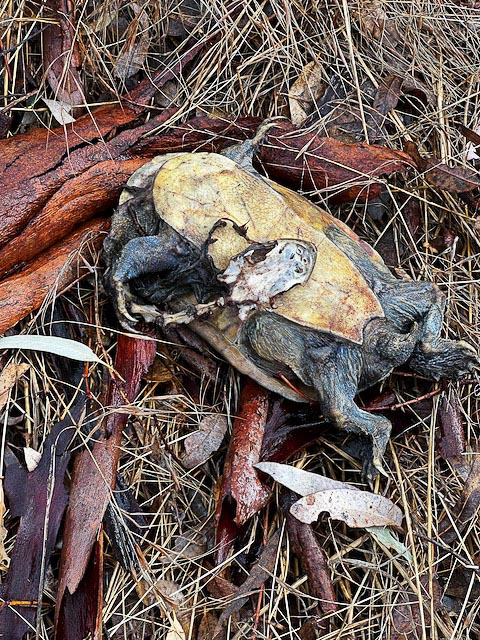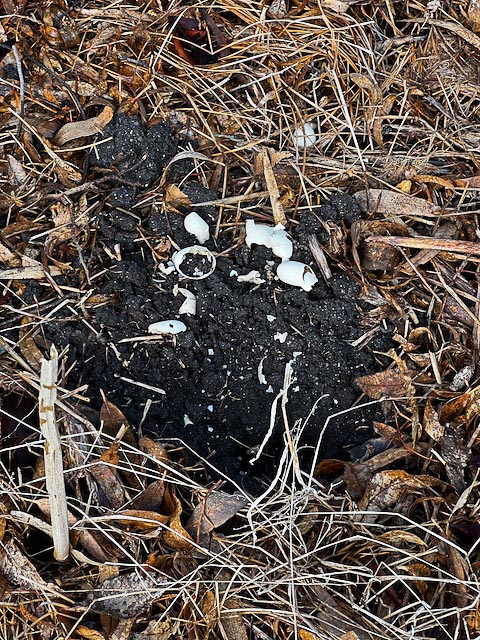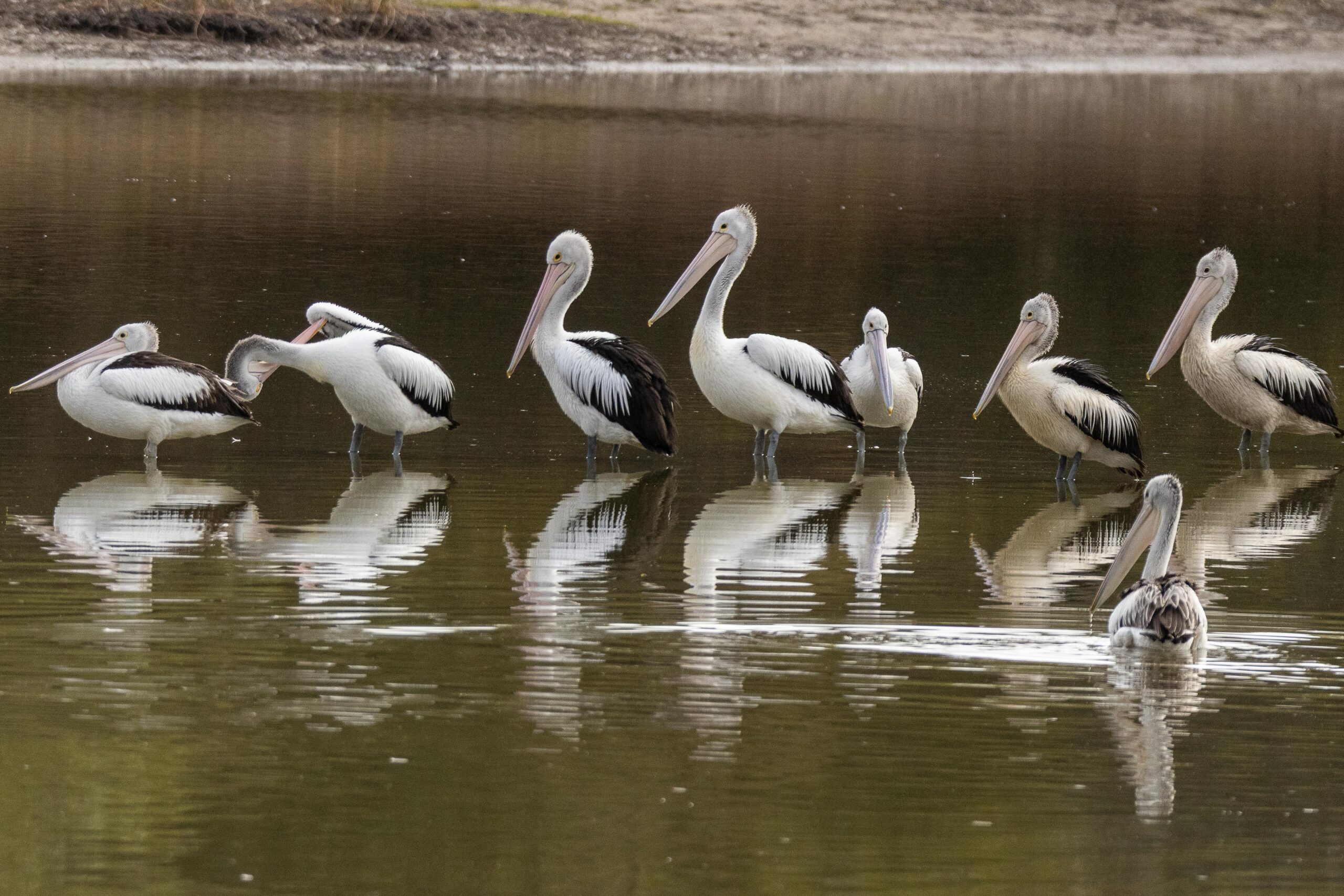Kwinana Rockingham Mandurah Branch, 25 May 2025
Initially planned for a walk at Lake Claremont, a late change saw us visit the Alcoa Wellard Wetlands instead due to advice that Lake Claremont was almost dry with few wetland birds present. A group of nine members attended the walk on an overcast morning following a rainy night. A pair of Carnaby’s Black Cockatoos flew past as we signed in; it’s always a good start to a walk.
We started with a walk up to the first bird hide close to the entrance. The large lake had few birds present; a Little Egret was at the rock feature just below the hide, and a Hoary Headed Grebe was seen way out on the lake.
We then walked along the track towards the other lakes.
Near the fence on the eastern side of the track, we saw large Golden Orb-weaver Spiders (Trichonephila edulis) in webs strung between the tree trunks.
Golden Orb Weaver Spider – Image by Colin Pricket

A flock of White Ibis flew over as we started, the first of many flocks we would see. The mostly eastern states Eucalypts, planted along the track, shed a lot of bark, leaving a thick layer of leaf litter that was quite wet following the past week’s rainfall. A search through the leaf litter only revealed Portuguese millipedes, although I am sure that if Daniel had been present, he would have found something more exciting. One unpleasant sighting along the track was the carcass of a Snake-necked Turtle, possibly killed by a fox, though several large raptors, known to frequent the wetlands, could also be responsible. Sadly, we would later find two batches of turtle eggs that had been dug up and eaten.


Arriving at the far end of the large lake, it was noticeable that the water level was low as several sand banks had been exposed. On those, we spotted Pied Stilts and Black-fronted Dotterels. Arriving at the bird hide to the left of the track, we saw a Great Egret, a Yellow-billed Spoonbill, a Purple Swamphen and an Australian Shoveller, as well as more Pied Stilts.
After making our way back to the main track, we continued to the two adjoining lakes. Here, there were more Black-fronted Dotterels in the shallow margins, plus good numbers of Pelicans out further. Walking along the track, we spotted more Australian Shovellers, another indication that water levels were low as they like to feed in the shallows. Whistling Kites were seen soaring overhead, occasionally disturbing a mixed flock of Galahs and Little Corellas. At one stage, three were seen coming and going near the beach not far from the track, probably feeding on a carcass, though a thick bed of reeds prevented finding what exactly the attraction was. A White-bellied Sea Eagle was also spotted soaring past. Grey Fantails accompanied us as we proceeded along the track, ready to snap up any insects we disturbed. Other woodland birds sighted included the Golden Whistler, Willie Wagtail, Western Gerygone, Weebill and Inland Thornbill. Australian Ringneck Parrots and Red Wattlebirds were busy in the canopy of the trees bordering the tracks. While at the point of turning around, a very heavy shower of rain came down. During the shower, the Pelicans were seen to open their mouths and point them upwards as if to capture the rain droplets, an interesting sighting.

After the rain stopped, we made our way back to the entrance and had a well-earned morning cuppa. It had been a great morning, with 30 species of birds recorded and uploaded to Birdata.
Colin Prickett

